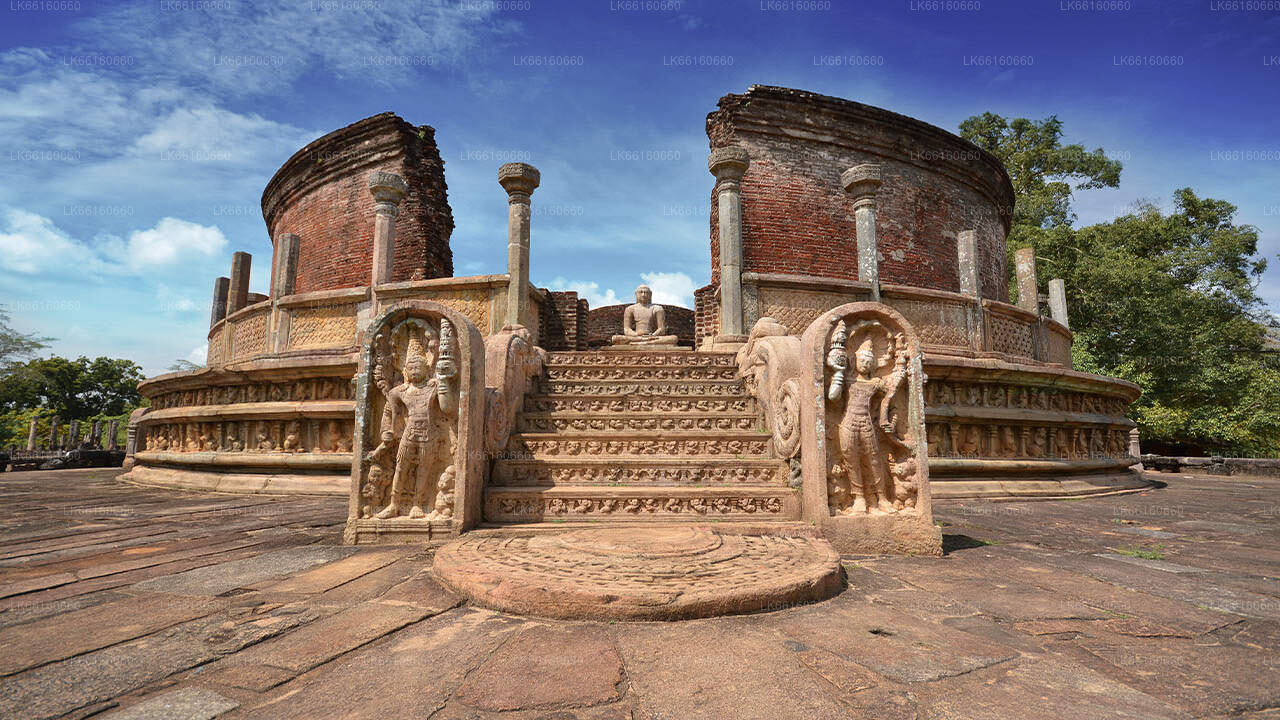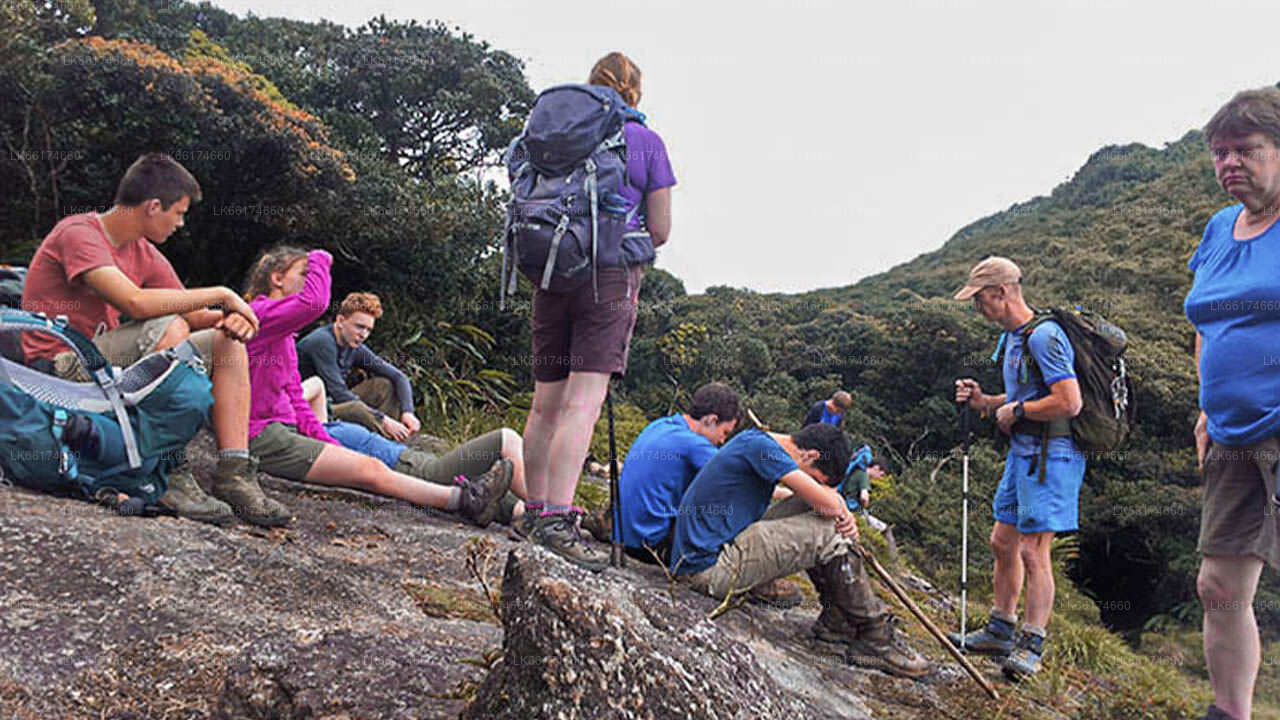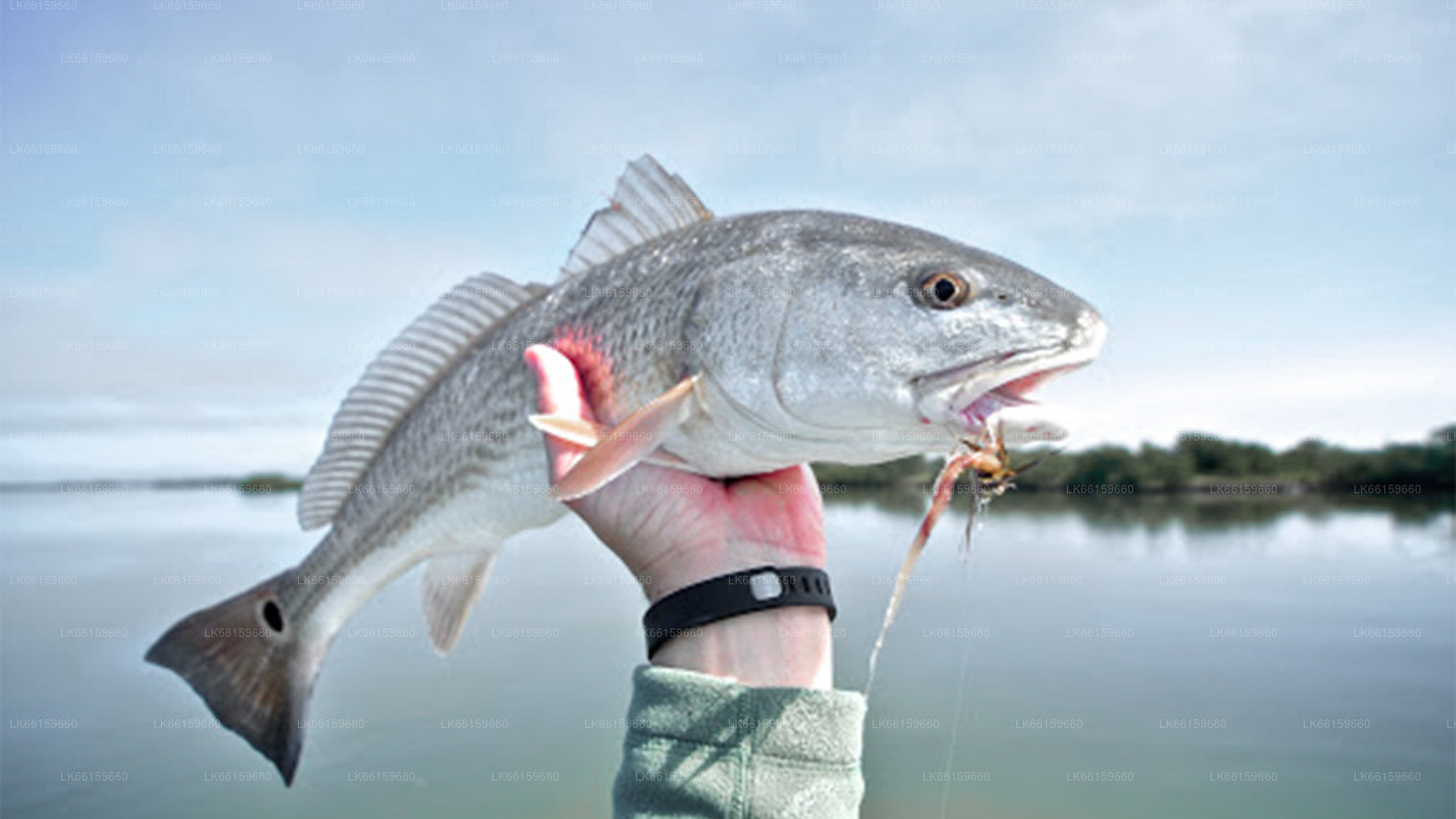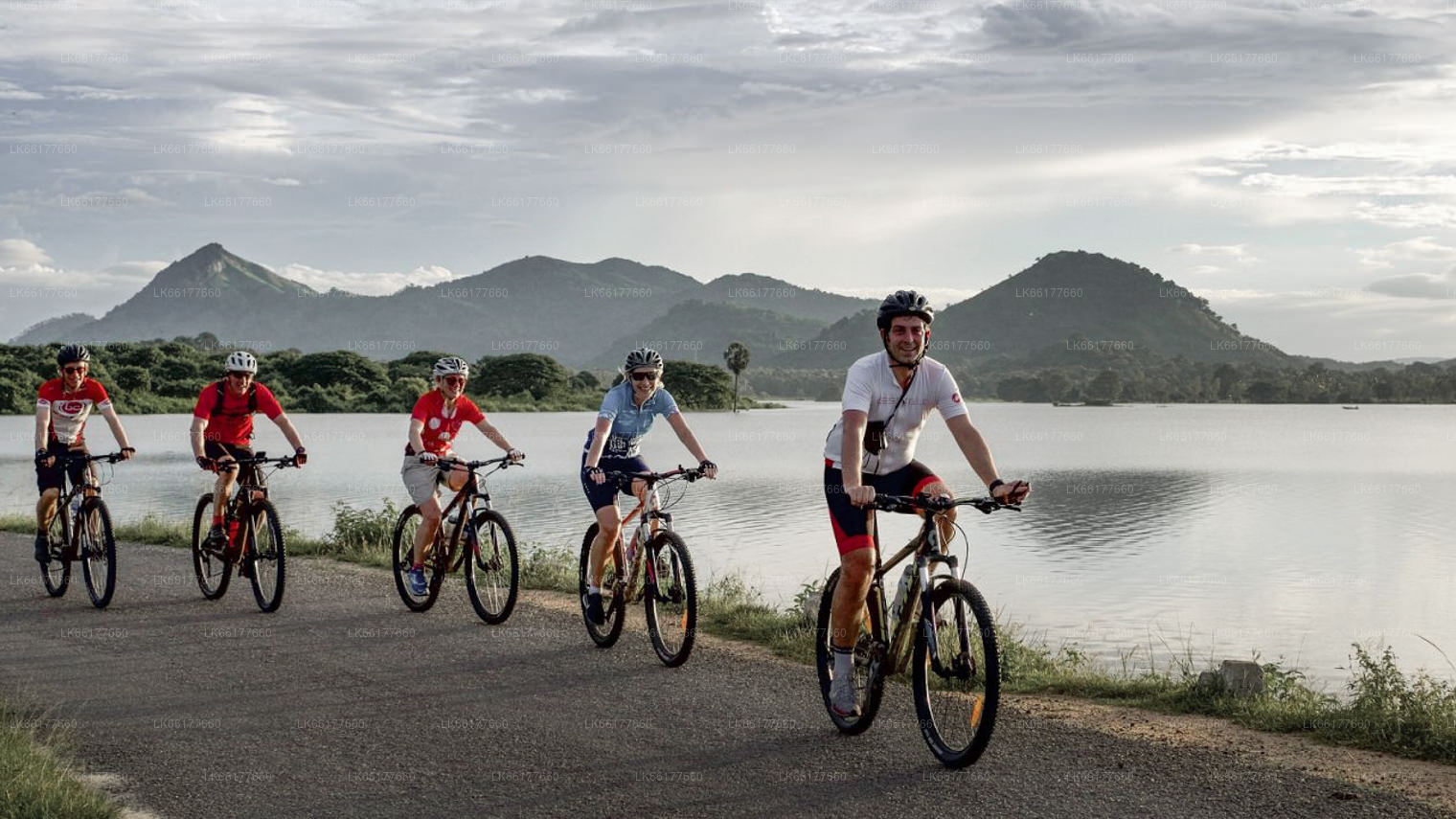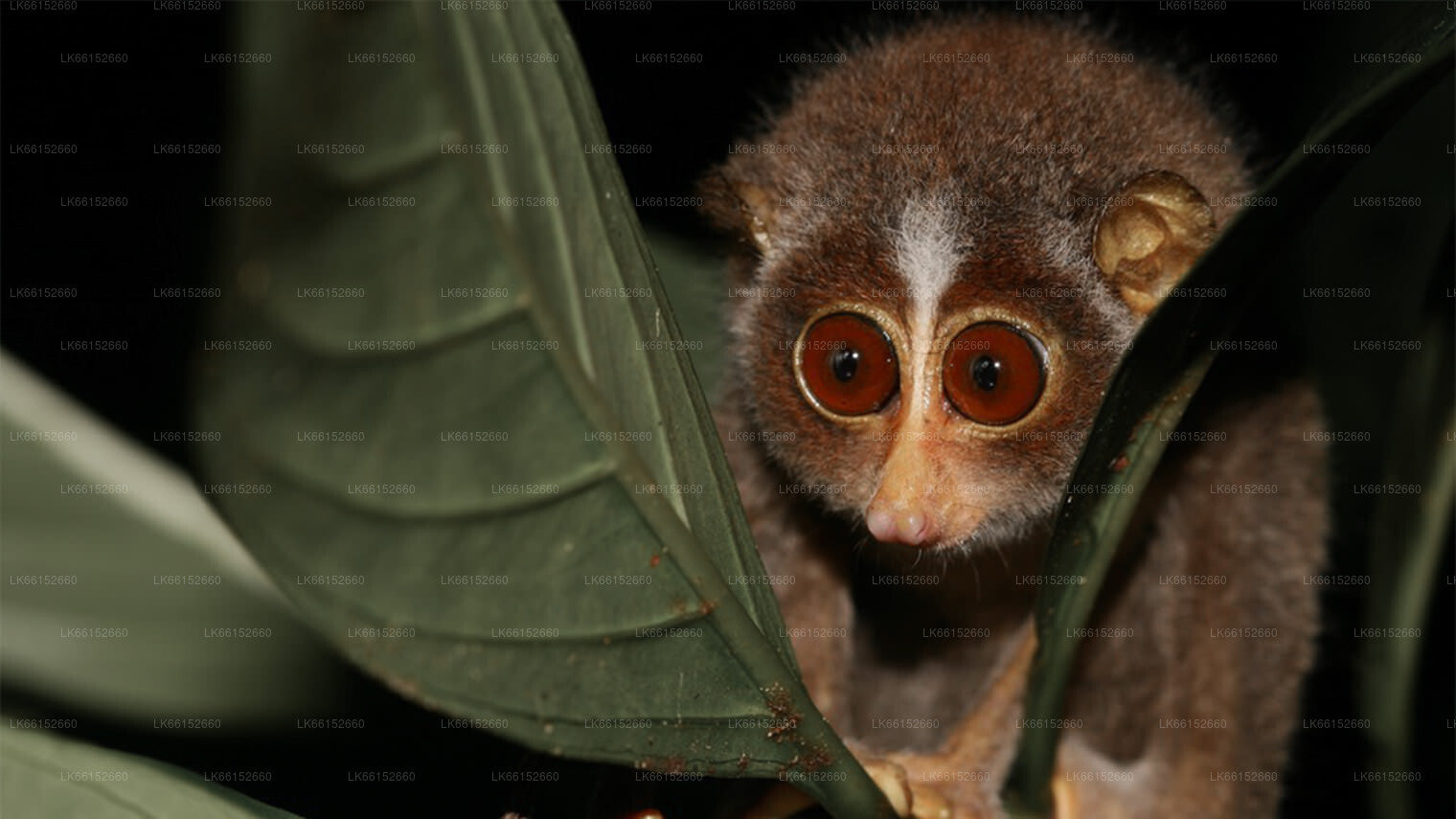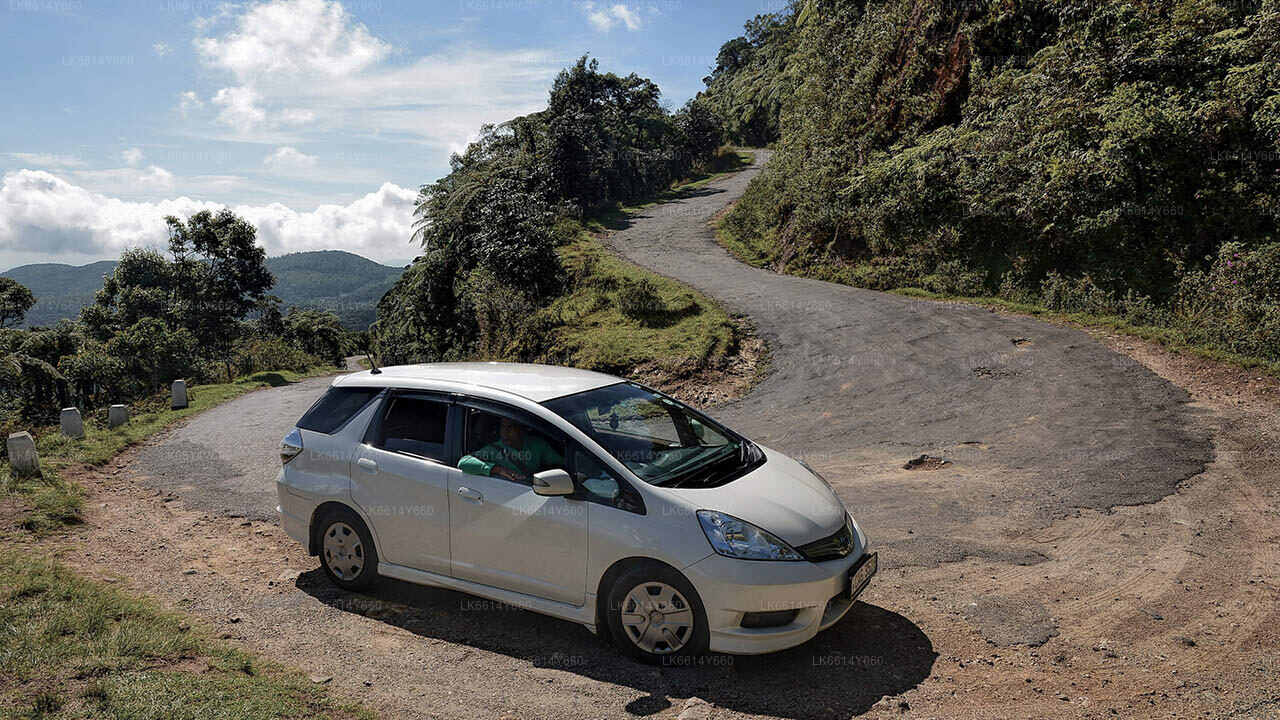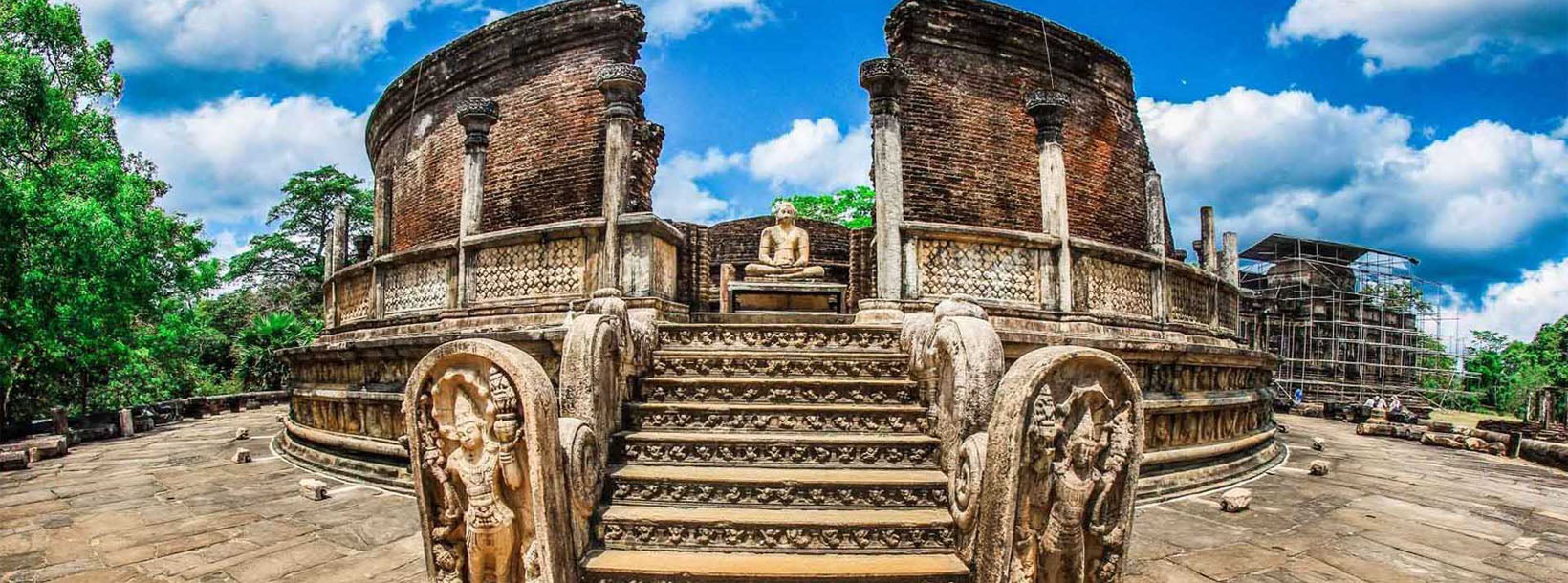
Ville de Polonnaruwa
Polonnaruwa, site classé au patrimoine mondial de l'UNESCO au Sri Lanka, était la capitale médiévale du pays (XIe-XIIIe siècle). Réputée pour ses ruines bien préservées, dont les emblématiques statues du Gal Vihara, elle présente une architecture impressionnante, reflétant la grandeur de l'ancienne civilisation cinghalaise.
Pulasthi Statue
The statue is located to the north of the city of Polonnaruwa, and close to the eastern bank of the Parakrama Samudra reservoir, which was built by Parakramabahu I himself. It is about 100 metres (330 ft) north of the ancient Potgul Vehera monastery
LocationThe statue is located to the north of the city of Polonnaruwa, and close to the eastern bank of the Parakrama Samudra reservoir, which was built by Parakramabahu I himself. It is about 100 metres (330 ft) north of the ancient Potgul Vehera monastery.
CharacteristicsThe statue was built presumably in the 12th century, during the reign of Parakramabahu I. The statue of Parakramabahu I is one of the best stone sculptures belonging to the Polonnaruwa period. The 11-foot-2-inch-high (3.40 m) statue is carved in high relief on a large boulder, with full use being made of its height. Its upper body is bare except for a single thread worn over the left shoulder.A long object is held in the hands. The statue's face carries a grave expression, with half-closed eyes, a high forehead, a long beard and a moustache. The shoulders of the statue are rounded, suggesting "extraordinary strength". The right leg is relaxed with the right knee bent forward slightly. The left leg carries the weight of the body, while the hip is also slightly inclined to the left. According to archaeologist Senarath Paranavitana, this statue is "the very embodiment of strength, majesty and dignity"
IdentityThe statue has not been positively identified, but the popular and widely accepted belief is that the statue is of King Parakramabahu I, who ruled the country 1153 to 1186. Historian Mendis Rohanadeera has suggested that the statue shows a man belonging to the Lambakanna clan, because a hare—a symbol of this clan—is depicted above the left shoulder of the statue. This supports the theory that it is a statue of Parakramabahu I, who was of the Lambakanna clan. However, another theory is that it is the statue of a sage; either Agastya or Pulasthi. The object held in the hands of the statue may be an ola (cured palm leaves) book. This, and the fact that it is located close to the Potgul Vehera, which was a library in ancient times, supports this theory. However, another belief is that the object is a "yoke of kingship".
À propos du district de Polonnaruwa
Polonnaruwa est la deuxième plus grande ville de la province du Centre-Nord du Sri Lanka. Classée au patrimoine mondial de l'UNESCO, sa cité antique est riche d'une riche histoire de conquêtes et de luttes, et constitue à juste titre le troisième élément du Triangle culturel. Située à environ 140 km au nord-est de Kandy, Polonnaruwa offre des heures de plaisir sans fin aux amateurs d'histoire et de culture, grâce à ses nombreux sites remarquables.
La plupart des ruines actuelles sont attribuées au roi Parakrama Bahu Ier, qui consacra d'importantes ressources royales à l'urbanisme, notamment à la construction de parcs, d'édifices, de systèmes d'irrigation, etc. Son règne est considéré comme un âge d'or où le royaume prospéra sous la conduite d'un souverain visionnaire. Le Parakrama Samudra, un immense réservoir, porte le nom de son mécène. Le célèbre palais royal, la salle d'audience entourée d'éléphants en pierre magnifiquement sculptés et le bassin de baignade témoignent de l'excellence technique de l'époque.
À propos de la province du Centre-Nord
La province du Centre-Nord, la plus grande du pays, couvre 16 % de la superficie totale du pays. Elle est composée de deux districts : Polonnaruwa et Anuradhapure. Anuradhapura est le plus grand district du Sri Lanka, avec une superficie de 7 128 km².
La province du Centre-Nord offre de nombreuses opportunités d'investissement pour la création d'entreprises, notamment dans les secteurs de l'agriculture, des industries agroalimentaires et de l'élevage. Plus de 65 % de la population de la province dépend de l'agriculture et des industries agroalimentaires de base. La province du Centre-Nord, également appelée « Wew Bendi Rajje », compte plus de 3 000 réservoirs de moyenne et grande taille. Sri Maha Bodiya, Ruwanweli Seya, Thuparama Dageba, le monastère d'Abayagiri, Polonnaruwa Rankot Wehera et Lankathilake sont des sites à surveiller.









